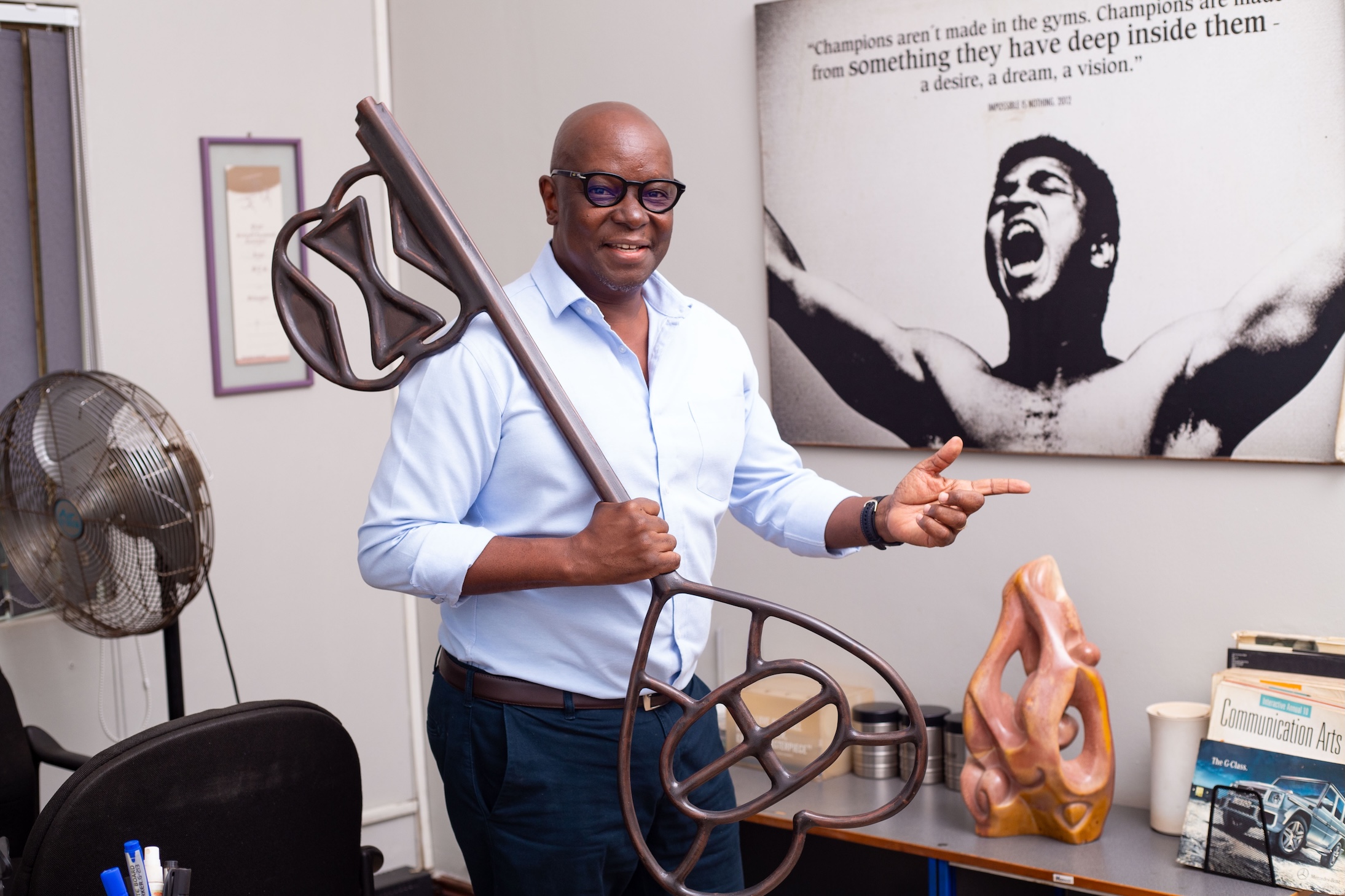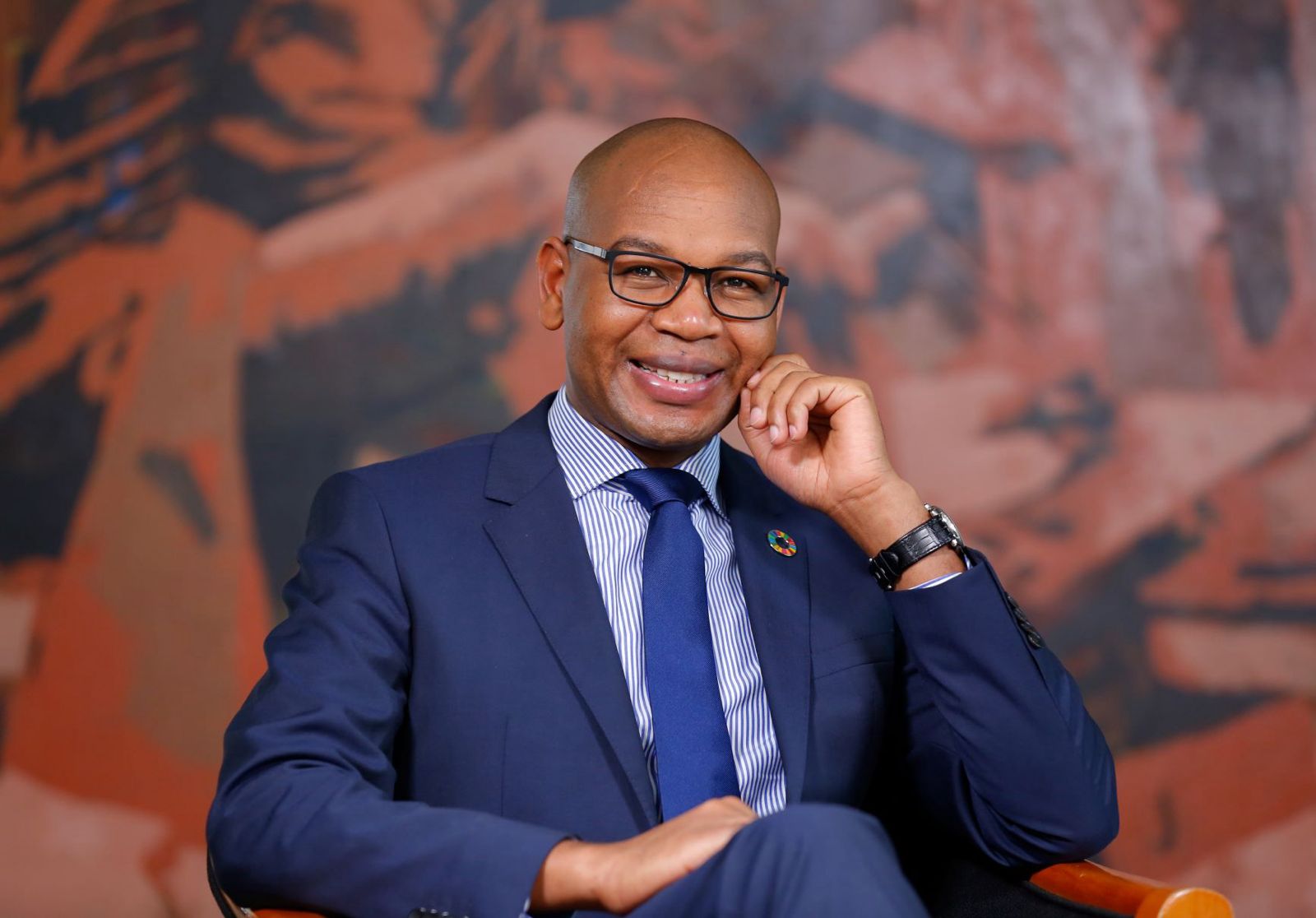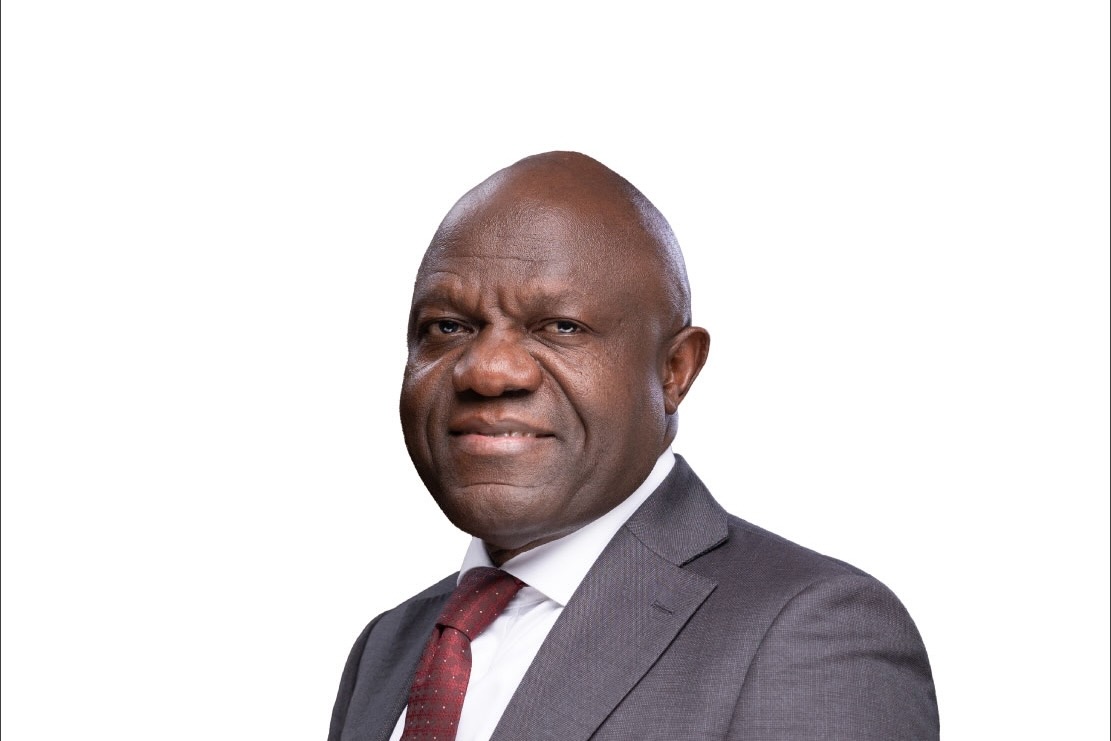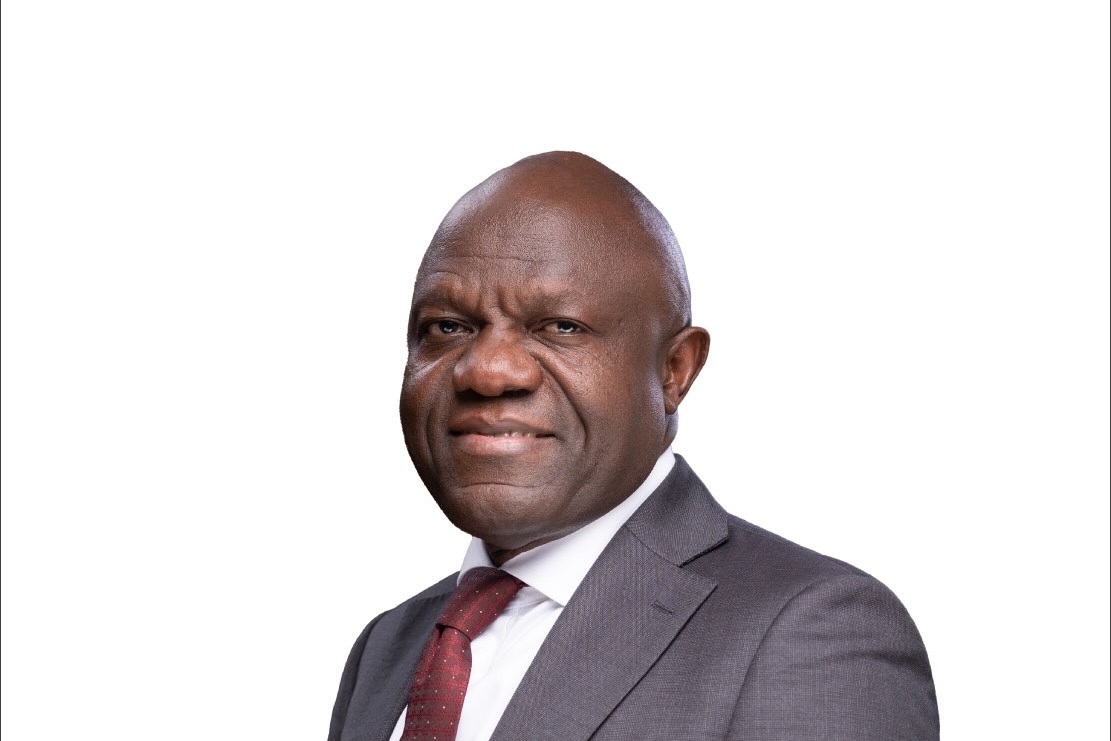David Galukande: The ‘G’ in QG Saatchi & Saatchi, Who In Many Ways Rewrote Uganda’s Advertising Story
Guided by a belief that world-class work could be conceived and executed in Uganda, Galukande helped set a new standard — one rooted in strategic thinking, cultural authenticity, and relentless hustle. In this conversation, he reflects on the big wins, the defining campaigns, the people he’s mentored, and the lessons learned from building an agency that became synonymous with the rise of Uganda’s modern advertising industry.
When you returned from the UK, what struck you most about Uganda’s media and advertising scene?
When I returned, Uganda was in a state of energetic rebuild. There was raw ambition everywhere you looked, but the advertising scene felt stuck in time. The creative spark was missing. TV commercials relied on clichés like people counting money. Print and radio were uninspired, often lacking wit or imagination. Compared to the sophisticated, emotionally intelligent campaigns I had seen in the UK, it felt like Uganda’s advertising industry hadn’t yet realised its potential.
How did your exposure to the UK’s advertising culture influence your perception of what was possible—or lacking—in Uganda?
The UK had shown me what advertising could be: witty, human, insightful. Campaigns like Hamlet Cigars’ “Happiness is a Cigar Called Hamlet” left a lasting impression on me. The storytelling, the craft, the humour; it was all worlds apart from what I saw back home. That contrast planted a seed. I knew there was a better way. I kept thinking we could do this here. Not by copying, but by building something rooted in our own culture, with our own voices, but guided by the same level of creative integrity.
And importantly, this was a time when Uganda was hungry for ideas. The energy was there, the ambition was alive; it felt like a fertile garden just waiting for someone to plant the right seeds. All it needed was belief, vision, and the courage to try something new.
What inspired you to believe that advertising could be a serious, scalable business opportunity in Uganda?
It began with countless conversations; first with my partner, and then with just about everyone I crossed paths with. There was this unmistakable energy in Uganda at the time; a hunger to build, to grow, to move forward. People were innovating with what little they had, driven by sheer will and resourcefulness. That resilience told me there was space and a need for bold, fresh ideas.
When I joined New Vision, I got a front-row seat to the power of media; how it could shape narratives, shift perceptions, and inspire progress. Combine that with my tech background and the creative perspective I had developed in the UK, and the path started to come into focus.
I could see the gap in the market, but I have to admit, I didn’t fully grasp how big it would become. What started as a possibility quickly grew into a mission. Advertising, I realised, wasn’t just a business; it was a vehicle for transformation.
You started at New Vision in a tech-oriented role. How did that path evolve into the founding of Imageset?
My entry point was technology; I joined New Vision as Computer Manager, overseeing six donated machines and helping modernise the editorial process. It was an exciting time; Uganda was rebuilding, and New Vision was part of that wave. I was training staff, troubleshooting equipment, and travelling upcountry. But being close to the publishing process, seeing how stories were crafted and shared, deepened my appreciation for the power of communication.

That’s when I met Patrick Quarcoo (PQ), and through a series of conversations, the idea of venturing into advertising began to take shape. With William Pike’s encouragement, we set up a small design outfit within PQ’s computer business; just a modest 3×2 meter space. It was humble, but it marked the beginning of what would grow into Imageset.
What specific gaps or inefficiencies in the advertising sector at the time motivated you to start a design and communication agency?
There were several. First, the creative bar was low; TV ads relied on clichés, print ads lacked imagination, and storytelling was almost nonexistent. Secondly, there was a lack of professionalism in the execution; the work wasn’t strategic, and it rarely reflected the consumer’s voice or reality. I believed that advertising could do more; it could sell, yes, but also inspire and shape culture. What we saw at the time wasn’t doing any of that. Uganda needed ideas. And I knew we could bring a new kind of thinking, one that was both creatively sound and commercially effective.
What were some of the earliest obstacles to launching a creative business in a market that was still very nascent?
Everything was a hustle. Clients didn’t fully understand the value of good design or strategy, so budgets were small and expectations were massive. We had to knock on doors every day to win work, and then stay up all night to deliver it. Colour printing wasn’t even available locally, so we had to send files to Nairobi, often dealing with corrupted floppy disks and frantic backup plans involving cross-border buses like Akamba. On top of that, there were cash flow pressures; landlords demanding a full year’s rent in advance, clients paying late, and no retainers in sight.
But those challenges sharpened our resilience. We built Imageset brick by brick, winning trust with delivery, not promises.
The story of the My Shoe campaign is often referenced as your early breakthrough. What lessons did you draw from that moment?
That campaign taught me the power of results-driven creativity. My Shoe gave us a challenge: clear its entire stock within a week. He offered us just $1 upfront, with the balance of $99 only if we succeeded. We took the risk, and our ad did the job. The stock was gone in two days, and he paid in full. More than just a win, it affirmed that we could deliver work that moved the needle.
The lesson was clear: in a market where trust in creative services was low, performance spoke louder than credentials. That job became a springboard. It gave us credibility and proved that creativity, when matched with commercial sense, could build real business value.
How did you go about winning the trust of big brands like Shell, Sheraton, Somarc, and in your early years?
It started with persistence and delivery. What we had was hunger, discipline, and a willingness to work twice as hard to prove ourselves. We’d canvass for business during the day and work deep into the night to meet deadlines. Every job, no matter how small, was treated like a chance to prove our worth.

PQ also brought something unique to the table: his charm, charisma, and sharp business mind. He had earned public respect through his innovative computer column, which was widely read and appreciated at the time. That gave him a kind of celebrity status, which opened doors. When we walked into a meeting, people already knew of him, and they were curious about what we were building together. That recognition helped us get in the room, but it was the work and the results that kept clients coming back.
What distinguished your approach from other small shops or legacy players already in the market?
We brought a fresh mindset. Many legacy shops were still stuck in traditional, template-driven approaches. We, on the other hand, were willing to take risks—to try something new, tell a different story, and challenge the status quo. Our UK-influenced creative lens helped us infuse humour, relevance, and boldness into the work. But more importantly, we tailored everything to the Ugandan context. That combination, strategic thinking, cultural relevance, and sheer hustle set us apart.
We weren’t just selling ads; we were helping brands communicate better, connect deeper, and grow faster. That’s what made Imageset different.
At what point did Imageset evolve from a basic design house into a full-service advertising agency?
The shift began organically. Initially, Imageset was just a design house; our core business was producing quality visuals, often for other houses. But as we gained clients of our own, something started to change. Clients weren’t just asking for flyers or press ads; they were coming to us for ideas, for guidance, for direction on how to connect with their audiences.
That turning point really came when our scope of work expanded alongside our client base. We moved into bigger offices, brought on more talent, and started owning the full communication journey, from concept to execution.
What were the key operational or philosophical shifts that enabled this transformation?
Philosophically, it was about believing we could lead, not just serve. We stopped thinking of ourselves as a support partner and started positioning ourselves as strategic advisors. That meant getting closer to our clients’ businesses, understanding their goals, and designing communication that delivered real results.

Operationally, we began building the right team. We brought in specialists: account managers, copywriters, production leads, and media strategists; people who could support a broader, more integrated offering. We also invested in our own pre-press house to reduce turnaround times and improve quality control. That infrastructure gave us the capability and confidence to take on bigger, more complex briefs.
What did “strategy” mean to you then, and how did you incorporate it into your client work?
It was about knowing your audience, understanding the environment, and crafting messages that would land with impact. For us, it meant going beyond just making things look good. It was about making them work.
We approached every brief with the question: What problem are we solving? Whether it was getting people to dine out or oil from a petrol station, we thought deeply about positioning, cultural relevance, and the emotional triggers that would drive action. That mindset became our edge—and it’s what transformed Imageset from a design shop into a trusted, strategic partner.
MTN’s entry is often considered a turning point for the industry. How did you secure that account?
It was a mix of timing, trust, and readiness. PQ was approached by MTN, which was entering Uganda as the second mobile network and looking for an agency to handle their brand launch. We saw it as a once-in-a-lifetime opportunity. Their brief was ambitious: launch the brand, articulate its vision, and get 5,000 subscribers within five years.
We put together a specialist team, pulling in some of the best talent available, including Miriam Odaka, Patrick Oyulu, Eve Bitechero, Tamara Cammings Johns, and JP Sebageni—and structured it to handle the full scope of MTN’s needs. I served as Creative Director, and we operated like a war room: lean, focused, and highly collaborative.
MTN introduced Uganda’s first major retainer model. How did this change the agency-client relationship and the financial health of your business?
It was revolutionary. Before MTN, the market was entirely project-based. Clients paid per job, which made forecasting difficult and cash flow unpredictable. MTN came in and offered a monthly retainer, a consistent income stream in exchange for an ongoing strategic and creative partnership.
This model gave us room to breathe and plan long-term. It allowed us to grow our team, invest in talent, and expand our infrastructure. More than that, it professionalised the agency-client relationship. We were no longer just vendors; we were partners at the table, involved in shaping the brand from the ground up.
What innovations did your agency introduce in MTN’s early campaigns—across TV, print, radio, and outdoor?
It all started with a strong strategic foundation that helped us produce work that truly resonated with the country. We weren’t just launching a telecom brand; we were helping introduce a new era of communication, and we knew the work had to reflect that scale and ambition.

For TV, we created a bold, emotionally charged commercial that positioned MTN as a brand investing in every Ugandan’s right to communicate. It was inclusive and disruptive in the best possible way; something audiences hadn’t seen before.
In print, we broke away from the tired, safe layouts. At the time, newspapers could only print in two colours, which made high-quality execution a challenge. But we worked around those constraints by working overtime to manage the process.
Radio gave us the chance to connect through language and laughter. We localised everything, translating spots into using humour and storytelling that made MTN feel human, not corporate. Outdoor advertising, too, was elevated. We pioneered supersized billboards that made MTN impossible to miss, bringing colour, energy, and visibility to every coverage zone.
Iconic campaigns like “Y’ello,” “Connected in 60 Seconds,” and the Kapo and Kaziro series left a deep imprint on Uganda’s brand memory. How did you ensure cultural authenticity in your storytelling?
Cultural authenticity was always our foundation. We made it a point to root every campaign in real, lived Ugandan experiences. We drew inspiration from downtown slang, everyday interactions, and even casual greetings in taxis and market stalls. With “Y’ello,” though, the idea came from a classic American sitcom, Good Times, but we localised it in a way that felt organic. The fact that MTN’s brand colour was yellow made it even more fitting—it just clicked. It was simple, memorable, and felt like something the brand could own.
When it came to Kapo and Kaziro, we didn’t cast characters; we discovered them. Kapo was modelled on a downtown personality with his trousers high and a toothpick in his mouth. Kaziro was inspired by a real shoeshine boy we’d heard stories about. We didn’t invent these characters; we elevated them. That’s what made them resonate. Ugandans saw themselves in these ads, and that emotional connection made the campaigns unforgettable.
What role did humour, local language, and character development play in winning hearts and minds?
They were everything. Humour disarmed people. It cut through scepticism and made the brand feel human. We weren’t trying to lecture anyone; we wanted to entertain, inform, and connect. Local language gave our campaigns texture and authenticity. A joke doesn’t land the same way in English as it does in Luganda or Runyankole, and we respected that.
Character development was what really set our work apart. We built narratives around Kapo and Kaziro that unfolded like a mini-series. Their journeys from aspiration to empowerment mirrored what many Ugandans were experiencing with mobile technology. They weren’t just ads; they were stories people followed, talked about, and looked forward to. That emotional investment is what created real brand loyalty.
Looking back, which of those early campaigns are you proudest of—and why?
It’s hard to pick one, but Kapo and Kaziro stand out because of the emotional depth and cultural impact. It wasn’t just about MTN being affordable or reliable; it was about showing how access to communication could transform lives. From the moment Kaziro upgraded his hustle with a phone to the scene where he returns the favour by helping Kapo out of an awkward situation, we showed a cycle of connection and upliftment that people believed in.
But “Y’ello” is another proud moment. The fact that a simple, joyful greeting from Uganda became MTN’s brand signature across the continent says it all. It showed that creativity rooted in local insight could scale globally. That, to me, is the ultimate success.
How did the affiliation with TBWA begin, and what was its significance at the time?
The affiliation with TBWA was initially driven by our partnership with MTN. As MTN’s central agency was TBWA South Africa, they encouraged closer collaboration between us and their regional teams. After a series of calls and exploratory discussions, we agreed to register TBWA in Uganda and rebrand as Adapt TBWA.

Although the collaboration with TBWA South Africa turned out to be more symbolic than operational, there was little day-to-day support. The association itself held little weight. At the time, affiliating with a global network gave us both credibility and strategic backing. It sent a signal to the market that we were playing in a different league.
What prompted the rebrand to QG Saatchi & Saatchi, and how did joining Publicis’ global network elevate your agency?
The real shift came later. Saatchi & Saatchi had been courting us for a while, but we were initially loyal to our TBWA ties because of MTN. That changed after a pivotal meeting with Santie Botha, MTN Group’s Head of Marketing at the time. She told us plainly that MTN’s model was to partner with “best-of-breed” agencies in every market. It was both a compliment and a challenge.
We realised that aligning with Saatchi & Saatchi—whose philosophy, resources, and global reach matched our ambitions would take us further.
Joining the Publicis network gave us access to world-class tools, methodologies, and global thought leadership.
What influence did international exposure—such as Saatchi’s Lovemarks philosophy—have on your team’s approach to branding and client work?
Lovemarks changed everything. Kevin Roberts’ philosophy, that brands should go beyond respect and inspire “love”, resonated deeply with us. We began to see branding not just as persuasion, but as relationship-building. It elevated our thinking from delivering campaigns to creating meaningful connections.
We attended workshops in South Africa and brought back tools and methodologies that sharpened our approach to problem-solving and creative development. Internally, we challenged ourselves to pursue ideas with real emotional resonance, work that was not only culturally grounded but capable of sparking devotion.
Lovemarks and other great tools we still use today also forced us to ask tougher, more ambitious questions: Will people miss this brand if it disappears?Does it create loyalty beyond reason? These questions shifted the way we approached everything, from briefs to execution. That thinking became part of our DNA, and it showed in the work we produced.
What was your approach to building agency culture—especially during periods of high-pressure growth?
Our culture was built on purpose and perseverance. From the beginning, we understood that what we were building was bigger than just a business; it was a movement to redefine what creative work could be in Uganda. During periods of intense growth, the pressure was real: tight deadlines, major accounts, long nights. But we turned that pressure into fuel. We believed in empowering people, encouraging open dialogue, and giving team members the confidence to take ownership of their work.
There was also a strong sense of camaraderie; we celebrated wins together and weathered challenges as a unit. We weren’t afraid of hard work because everyone believed in the mission. And while the hours were long, the energy was contagious. The agency felt alive.
How did you groom creatives, strategists, and account managers to thrive in an industry that was still taking shape?
We created a learning environment where people could stretch beyond their job descriptions. In an industry that was still defining itself, formal training didn’t exist, so we built our own system. We emphasised hands-on experience, critical thinking, and cross-functional collaboration. People learned by doing and by being challenged.
We encouraged curiosity and pushed our teams to question assumptions, dig deeper into briefs, and look beyond surface-level solutions. Whether someone started as a junior designer or account assistant, they were exposed to strategy, production, and client management early on. We wanted well-rounded thinkers, not just executors.
To strengthen that foundation, we exposed our teams to world-class tools and frameworks from our global networks. We also brought in trainers like Nick Hauser, whose unconventional methods helped unlock fresh thinking and expand creative confidence. His presence and the broader access to global best practices elevated the team’s approach to problem-solving and idea development.
It was all about nurturing thinkers who could not only deliver for today but shape the future of the industry.
Who are some of the people you mentored who went on to shape the industry in their own right?
Many of the people who passed through our agency went on to lead agencies, build brands, or become influential voices in the creative sector. While it’s hard to name everyone, what matters most to me is the ecosystem we helped spark, where young talent could find mentorship, take risks, and build careers in an industry that barely existed when we started.
Looking back, that legacy of talent development is just as meaningful as any campaign we launched. It was never just about the work; it was about the people who would carry the vision forward.
Industry observers note that regional dynamics—especially in Kenya and South Africa—had a significant influence on Uganda’s advertising growth. How did these regional players shape or challenge your strategy?
Kenya and South Africa were ahead of us in many ways: bigger markets, stronger infrastructure, and more mature agency systems. For a while, Ugandan clients and even multinationals operating locally often defaulted to Nairobi for their creative needs. It wasn’t just about budgets, it was about confidence.
But rather than feel threatened, we used that as motivation. We studied how those markets worked, understood their strengths, and asked ourselves: What can we do differently? What can we do better?We knew we couldn’t outspend Nairobi or Johannesburg, but we could out-listen, out-create, and out-relate. We leaned into cultural authenticity, speed of execution, and local insight.
During the early 2000s, global affiliation wars—particularly involving McCann, Ogilvy, and Lowe—caused major disruptions. How did you protect your agency’s position amid such turbulence?
While we had a strong global affiliation, the truth is we had built 95% of our business from within on relationships, referrals, and our own track record. That gave us a sense of independence. We weren’t overly reliant on global networks, so we never felt pressured or at risk.
We also understood the power of positioning. Rather than being just a local agency with a global nameplate, we worked hard to be seen as the best of both worlds: “Glocal” – globally connected, but deeply rooted in the local market. Clients appreciated that. They knew we understood the Ugandan audience better than anyone and that we could still bring international thinking to the table when it mattered.

That balance, local insight with global polish, is what carried us through and kept us competitive even as the landscape evolved.
Did any shifts in global alliances (IPG, Publicis, WPP) ever directly affect your client relationships or competitive standing?
Yes, without a doubt. As global networks like IPG, Publicis, and WPP consolidated their structures and began managing major accounts at a global level, we started to see significant shifts. Large multinational clients who may have once chosen their agency partners locally were now making decisions from regional or global headquarters. That changed the game.
There were moments when long-standing accounts were suddenly put up for review, not because of performance, but because of global alignment. In some cases, we lost major clients due to these shifts. It was a tough reality, and it hit hard.
Oldtimers speak of vital but lesser-known players—colour separation technicians, production experts, layout teams—who underpinned agency success. Who were some of these foundational contributors at Imageset or Adapt TBWA?
Mentioning names can be dangerous, but I’ll do my best to remember. At Imageset, some of the foundational contributors included JP Sebageni, Peter Corry, Cliff Butagira, and Loy Obote.
As we transitioned into Adapt TBWA, the team expanded to include Miriam Odaka, Patrick Oyulu, Eve Bitechero, Tamara Cammings Johns, and Anne Sseba.
They may not have been in the spotlight, but they were the engine behind the work—the people who made it all happen.
What role did behind-the-scenes partnerships (e.g., with Gustav Gønget or local print/post-production houses) play in enabling your creative output?
Our partnerships with production and print houses were more than transactional; they were collaborative extensions of our creative and production teams. People like Gustav Gønget played a vital role. He had a mastery of colour separation and a deep understanding of the limitations of the local print environment. We leaned on his expertise heavily, especially when the stakes were high, and quality couldn’t be compromised.
How did Uganda’s media liberalisation in the 1990s affect the way your agency worked and pitched campaigns?
It meant we had more platforms to work with; places to put ideas, voices to carry messages, and formats that allowed for experimentation. It expanded our creative canvas and gave us new momentum in how we pitched and executed campaigns. It also made clients more receptive to integrated, multi-channel thinking, which helped agencies like ours thrive.
Importantly, this liberalisation coincided with the arrival of bigger spenders in the market; multinationals, telecoms, and banks, who came with higher expectations and larger budgets. That combination of new platforms and serious investment created the perfect environment for agencies to innovate, scale, and professionalise. It was a turning point.
What new platforms or opportunities did private radio, growing TV channels, and colourful newspapers create for your creative executions?
Private radio, in particular, opened up a world of possibilities. It allowed us to speak to audiences in their local languages, using humour, music, and storytelling that was deeply rooted in culture and everyday experience. It gave brands a voice that felt familiar and more acceptable.
TV, too, became more competitive. As new channels emerged, the demand for quality content increased, giving us a broader canvas to explore more creative, visually engaging storytelling. It pushed the industry forward and gave us room to take risks.
Meanwhile, newspapers began acquiring full-colour presses, which significantly improved print quality and accuracy. That advancement allowed our creative work to stand out more vividly, bringing designs to life in a way that hadn’t been possible before.
Together, these shifts transformed media from just a space for placements into an active playground for creative innovation.
Did you see yourself as just an agency owner—or also as a builder of the broader media and communications ecosystem?
At the time, we weren’t thinking about it in those terms. We weren’t consciously setting out to build an ecosystem; we were just focused on doing the work, solving problems, delivering for clients, and keeping the business moving forward. It all happened in real time, and much of it was instinctive.
But looking back, we can see that we were part of something bigger. By raising creative standards, collaborating with media houses, mentoring talent, and pushing for better production infrastructure, we were actively shaping the communications landscape in Uganda, whether we realised it or not. So while we may not have set out to build the ecosystem, that’s exactly what we ended up doing.
Many industry voices argue that clients like MTN, Nile Breweries, and BAT helped mature the advertising industry by demanding world-class work. Do you agree?
Yes, I completely agree. Clients like MTN, Nile Breweries, BAT, and others raised the bar for the entire industry. They came in with global standards and refused to settle for mediocrity. Their expectations pushed agencies, ours included, to rethink everything from strategy to execution. It was no longer enough to just “do a nice ad.” You had to be smart, relevant, and impactful.

MTN, especially, was a turning point. They expected integration across media, insight-driven campaigns, and top-tier production values. Working with clients like that forced us all to grow up fast.
How did your agency adapt to serve such corporate clients with global expectations?
We recruited more intentionally, trained more rigorously, and remained acutely aware of our clients’ growing expectations. The market was becoming more competitive, and so were we. We knew that to meet the standards of global brands, we had to continually evolve: in our talent, our processes, and our thinking. It wasn’t just about keeping up; it was about staying ahead.
What made your agency stand out compared to Nairobi-based or South African competitors who also sought these accounts?
What set us apart was our cultural fluency and responsiveness. We were local, but not parochial. We understood Ugandans; their humour, habits, aspirations, and we knew how to translate those insights into work that moved people.
While Nairobi and South African agencies had bigger teams and resources, they often missed the local nuance. We didn’t. And we proved that world-class work could come from Kampala without having to outsource the thinking.
Uganda’s creative industry once relied heavily on Kenyan talent. When did you feel Ugandan creatives had come into their own?
Over time, the market began to appreciate work that felt genuinely Ugandan; work that spoke the language, reflected the humour, and captured the rhythm of everyday life. That appreciation sent a strong message: our own voices had value.
It was that shift that inspired a new generation of creatives to enter the industry. They saw that they didn’t have to imitate or import ideas to make an impact. The fact that homegrown work was resonating gave them the confidence to step in, shape the narrative, and own the space.
What investments did you make in building local capacity—and what barriers did you have to overcome?
We invested heavily in people. From the start, we understood that talent was our most valuable asset. Our structure was built to support continuous capacity building through mentorship, exposure to global tools, and hands-on learning across disciplines.
However, that growth hasn’t come without challenges. One of the biggest disruptions has been account shifts, especially with large regional or global clients. When accounts move, talent often moves with them. It’s created a culture of continuous poaching, which can unsettle teams and make long-term development difficult.
What do you think explains the shift to more Uganda-led campaigns and agency leadership in the 2010s?
A big part of it is cultural confidence. Ugandans became more appreciative of their own identity, something that started to show clearly in music, fashion, film, and everyday expression. Local music took over the airwaves, Luganda phrases made their way into mainstream conversation, and there was a renewed pride in our identity and language.
That same cultural pride naturally extended to advertising. People wanted to see themselves reflected authentically, not through borrowed voices or imported styles, but through work that felt rooted in Uganda. As creatives, we responded to that shift.
Agencies that understood local nuances, language, humour, rhythm, and context were better positioned to lead. And as more Ugandans entered the industry and took creative ownership, it became clear that the best work was coming from within.
Retainers once offered stability, but today, many agencies complain about shrinking margins and intense client demands. How do you view this evolution?
Good retainers gave us predictability. They allowed agencies to plan, build teams, and invest in long-term thinking. But that model has changed. Today, clients are more ROI-driven and project-focused. They want results fast, and they want transparency at every stage.
Margins have tightened, and the pressure to do more with less is real. It’s a tough adjustment, but not unexpected. Every industry evolves. The key is not to resist the change, but to find new ways to deliver value beyond traditional output alone.
With AI, automation, and data-driven tools on the rise, how do you think the traditional agency will need to adapt to survive?
Retainers gave us predictability. They allowed agencies to plan ahead, build strong teams, and invest in long-term thinking. But that model has changed. Today, clients are more ROI-driven and project-focused but often not willing to pay more for the increased demands they place on agencies. They want results fast, flexibility, and full transparency at every stage.
Margins have tightened, and the pressure to do more with less is very real. It’s a tough adjustment, but not unexpected. Every industry evolves. The key is not to resist the change, but to find new ways to deliver value beyond traditional output alone. Agencies now have to think smarter, act faster, and show impact in measurable ways.
The only way forward is to embrace it. We’re already doing that, repositioning ourselves to go beyond communications and deliver holistic, solution-driven value.
What is your advice for the next generation of agency owners trying to build sustainable, profitable firms?
Stay ready to evolve. The industry is changing faster than ever; what worked yesterday may not work tomorrow. Build firms that are agile, not just big. Invest in people who can think, adapt, and learn. Evolution isn’t a one-time pivot; it’s a constant mindset.
When you look back at your journey from Imageset to QG Saatchi & Saatchi, what moments define your legacy in Uganda’s advertising history?
It’s being part of a movement that proved world-class work could be born in Uganda—not imported. We showed that our ideas, our voices, and our creative instincts were enough. That we didn’t have to look to Nairobi, Johannesburg, or London for validation. We could build it here, from scratch with local talent, local insight, and a relentless belief in what was possible.
What impact do you hope your work has had on the creative profession in Uganda?
Inspiring a generation of creatives to believe that their talent was enough, that they didn’t need to look elsewhere for validation.
Who are some of the current or emerging players in Uganda’s advertising/communications world that you think are doing exceptional work?
The industry is changing, and the exceptional ones are those shaping that change around what matters to customers.
Finally, what unfinished business or new frontiers still excite you about this industry?
The intersection of creativity and technology, especially how AI, automation, and data will redefine storytelling.
Share this content:

 MadWoman of the Moment: Building Blu Flamingo — Seanice Kacungira’s Fearless, Faith-Fueled Rise to a Pan-African Digital Powerhouse
MadWoman of the Moment: Building Blu Flamingo — Seanice Kacungira’s Fearless, Faith-Fueled Rise to a Pan-African Digital Powerhouse







Post Comment